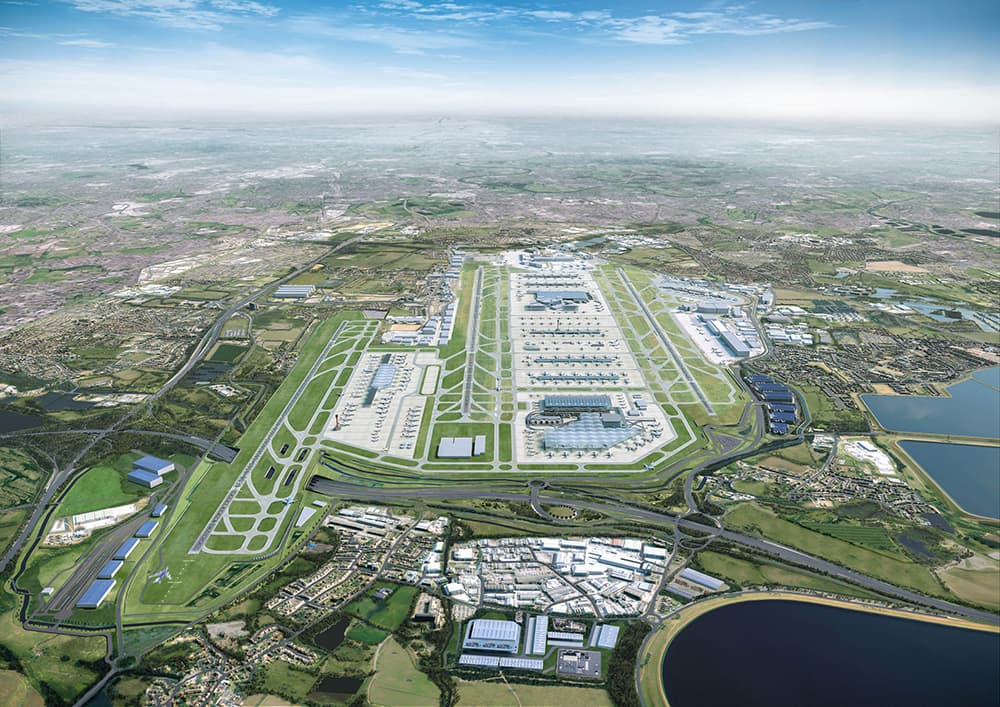The End of L.A.’s Magical Thinking
The fires around Los Angeles are getting under control. But, inevitably, another fire will start.

The cruel reality of living through a moment of catastrophic change is that the knowledge of how many other people are also living through it offers no comfort. It is happening to you: Your house is gone. Your father’s paintings are gone. Your hundreds of hours of footage, meant to be your film, gone. Your family’s efforts, across a whole generation, to establish financial stability, literally up in smoke. That this is also happening to other people is awful. As is knowing that it will almost certainly happen again.
Los Angeles is still smoldering. The winds have died down, but the Palisades Fire is just 39 percent contained, and the Eaton Fire is 65 percent. Many residents are under instructions not to drink their tap water, which ash and melted pipes may have contaminated. Tens of thousands of people under evacuation orders are still waiting to return, perhaps to a burned-out lot, or perhaps to a house still standing but coated in the toxic remains of everything around it.
The fires were, at their worst, unfightable. But destruction at this scale was not inevitable. The question now is what measures anyone will take to limit the damage next time.
Because there will be a next fire. The vegetation—fire fuel—will grow back, fire season will keep lengthening into wind season, and the combination of drought and wind will nurse an errant spark. Fire is part of the ecology in California; a century of suppressing it has only set up modern blazes to be more intense.
The way places such as California prepare for these fires has to change, or more neighborhoods will, end up in ruins. Insurance is meant to insulate people from bearing the costs of extraordinary events, but those are becoming ordinary enough that private insurers have been leaving California. The state’s FAIR Plan, a pooled insurance plan of last resort, is oversubscribed, and may not be able to cover the claims from these fires alone. If it exercises its power to demand that private insurers help cover the difference, that could send even more fleeing. These are all signs that the state’s magical thinking about fire risk has exhausted itself.
[Read: Are you sure your house is worth that much?]
“California is like a driver that’s had five car accidents,” Michael Wara, a former member of California’s wildfire commission who now heads a climate-and-energy-policy program at Stanford University, told me. The state is at proven risk of catastrophic loss. But because California has spent years trying to keep insurance rates somewhat reasonable, those (still high) rates don’t reflect the real risk homeowners face. This creates a problem further up the insurance food chain: Insurers rely on reinsurers—insurance companies for insurance companies—who, Wara said, “are supposed to lose one in 100 times … They’re not supposed to lose, like, four times out of 10, which is kind of where we’re on track for in California.”
If a few of those companies stop insuring the insurers, there aren’t necessarily others to step in. The state is trying to stave off a reinsurance crisis by allowing insurers to incorporate more risk probability and reinsurance prices into their rates, as of last year. But California could still turn into Florida, where all but the most local insurers are leaving the state, or going belly-up, and insurance in places can cost tens of thousands of dollars a year. Because coverage is generally required for anyone seeking a mortgage, soaring rates in California could drive home values down, threatening yet another crisis, this one in real estate. And if existing homeowners can’t get insurance, they’ll be left bearing the cost of catastrophes all on their own, like many in the burn area around Los Angeles are now.
If nothing changes, more people will get sucked into this doom spiral, because California cannot avoid some level of catastrophe. Wind-driven fires like the ones in L.A. throw embers far ahead of themselves, leading to conflagrations that firefighters can’t stop, and the fastest fires are growing faster now. Transferring those risks to insurance will become less and less affordable as the climate warms and more people live in the zone where cities meet wildlands, because the catastrophic risk to homes is high and getting higher. As Nancy Watkins, an actuary at Milliman who specializes in catastrophic property risk, told me, “That actually is not an insurance problem. It’s a risk problem.”
To bring down risk, she wants to see neighborhoods embark on ambitious missions to “harden” homes and the landscape around them, and then see insurance companies account for those efforts. If each homeowner has removed vegetation from the first five feet around their house, if the neighborhood has kept its roads clear and made firebreaks where fire would be likeliest to enter, a place has much less of a chance of burning down, even in major fires. Plenty of communities, even the most fire-prone ones, still don’t do this. Watkins imagines a future database in which each parcel of land is inspected for fire-readiness, so that each neighborhood can be profiled for fire safety and insurers can price rates accordingly. Creating this system would take major effort, she knows, but it would motivate collective action: If it meant the difference between your whole neighborhood getting insurance and being uninsured, you would probably clean up your yard and screen your vents.
Watkins herself lives in the Moraga-Orinda Fire District, a highly flammable area outside San Francisco, which Wara’s research has identified as one of the top three places where the worst overnight losses could occur, from an insurance perspective. (Another was Pacific Palisades.) She was one of many in her area who got a nonrenewal notice from her insurer last year. Now she’s making her plot as fire-proof as possible, in hopes of coaxing an insurer back. It’s like staging a property for sale, she said: “We’re staging our home for insurability right now.” She cut down a 10-year-old manzanita tree and pulled out her mint garden, but so far she’s kept the Japanese maple that came with the house and turns a brilliant red in the fall. Once she has fire-proofed the rest of the property, she plans to invite a fire-chief friend over for dinner and ask, How bad is the maple? “And then do what they say,” she told me.
But unless her neighbors make similar efforts, Watkins’s risk will still be elevated. And taking these measures can be politically unpopular. Dave Winnacker, who was the fire chief of the Moraga-Orinda Fire District until his retirement last month, told me about trying to pass an ordinance that would require homeowners to keep a five-foot perimeter around their house free of flammable material; the public comments were overwhelmingly in opposition, even though these borders are proved to cut a house’s risk of burning down, he said. Residents called it a draconian overreach that would make their home unsightly and bring down property values. He chose that moment to retire. He didn’t want to be held accountable for their failure to act the next time fire arrived.
When communities do act, it can save them. Crystal Kolden, a pyrogeographer at UC Merced, studied what happened to Montecito, California—the town of Harry and Meghan, and Oprah—after it decided in the 1990s to take fire prevention seriously. From 1999 to 2017, the town spent $1.6 million total clearing brush, maintaining evacuation paths, building fuelbreaks, and working with homeowners to make sure they’d cleared vegetation around their houses. When the Thomas Fire came through in 2017—a worst-case-scenario fire for the region, with wind speeds around 75 miles an hour—Montecito could have lost 450 to 500 homes, Kolden’s research showed. Instead it lost just seven. Yards in Montecito do look a little different from others in California. But “there’s a lot of really gorgeous landscaping that does not burn,” Kolden told me. Succulents and other fire-resistant plants—think giant agaves—can be close to houses; rock gardens can be beautiful. Palm trees are fine if they’re well-manicured enough that they wouldn’t throw off flaming fronds, as some in L.A. did this week.
For a wealthy community such as Montecito, less than $2 million across almost 20 years is by no means prohibitively expensive. And according to Wara’s research, the state could help fund projects like these at relatively low cost. By spending about $3 billion a year—less than Cal Fire’s total fire-suppression budget in 2020, by his calculation—the state could harden about 100,000 homes a year, starting in the most fire-prone areas, and build fuelbreaks in every highly threatened community. That would also cover preventive burns on every acre that needs them, to prevent larger fires later.
Of course, landscaping and building better-sealed homes won’t change the fact that the biggest California fires are getting more intense. Climate change is creating more suitable conditions for the worst conflagrations to arise, and they will, again and again, with greater frequency now. Slowing that trajectory is a matter of global action. But yet here Angelenos are, living at the scale of their homes, their parcels of the Earth. Fires in California are like hurricanes in Florida. They’re going to happen, and people will live in their path. Stopping them from happening is impossible. But minimizing the damage they wreak is not.
What's Your Reaction?






























.jpg?width=1920&height=1920&fit=bounds&quality=80&format=jpg&auto=webp#)

















![100K Points Offer for the Amex Gold Card with No Lifetime Language [Targeted]](https://boardingarea.com/wp-content/uploads/2025/01/c11d5bb56412ba2c4f1655030a6bc552.jpg?#)


































